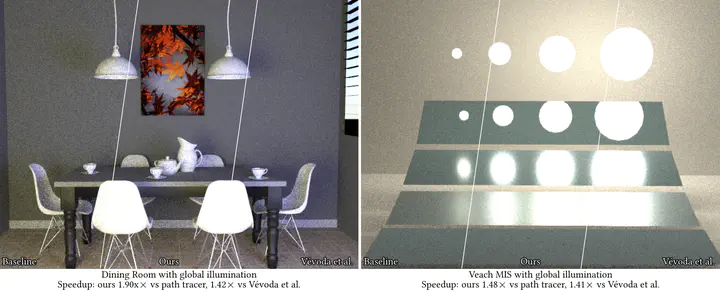
Abstract
Monte Carlo rendering makes heavy use of mixture sampling and multiple importance sampling (MIS). Previous work has shown that control variates can be used to make such mixtures more efficient and more robust. However, the existing approaches failed to yield practical applications, chiefly because their underlying theory is based on the unrealistic assumption that a single mixture is optimized for a single integral. This is in stark contrast with rendering reality, where millions of integrals are computed—one per pixel—and each is infinitely recursive. We adapt and extend the theory introduced by previous work to tackle the challenges of real-world rendering applications. We achieve robust mixture sampling and (approximately) optimal MIS weighting for common applications such as light selection, BSDF sampling, and path guiding.